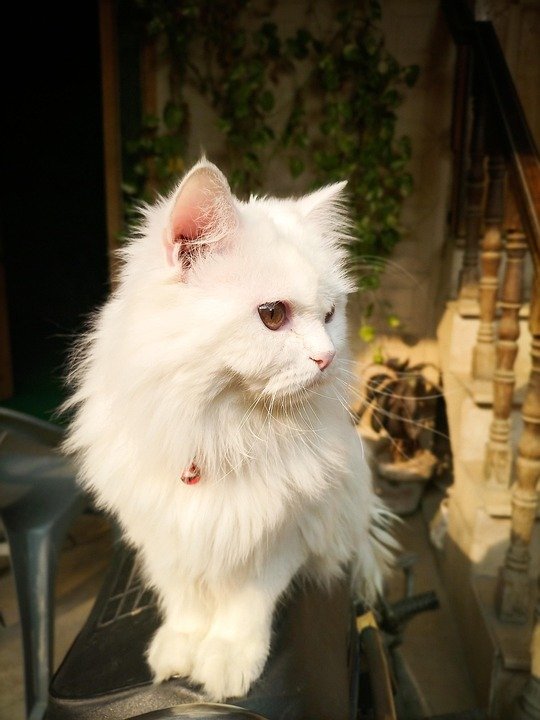
Unraveling the Longevity of Persian Cats
Persian cats are known for their luxurious coats, expressive faces, and calm demeanor. They are one of the most popular cat breeds in the world, beloved for their beauty and affectionate nature. However, like all living creatures, Persian cats have a limited lifespan. In this article, we will delve into the factors that contribute to the longevity of Persian cats and explore ways to help them live long, healthy lives.
Genetics and Breed Characteristics
One of the primary factors that influence the longevity of Persian cats is genetics. Persian cats are a purebred breed with distinct physical characteristics that have been carefully preserved over generations. These characteristics, such as their long coat, flat face, and round eyes, are a result of selective breeding to achieve a specific look. While these traits make Persian cats unique and beautiful, they can also impact their overall health and longevity.
One of the most well-known health issues in Persian cats is brachycephalic syndrome, a condition that affects cats with flat faces and short noses. This syndrome can cause breathing difficulties, dental issues, and eye problems, all of which can impact the cat’s quality of life and lifespan. Additionally, Persian cats are prone to certain genetic disorders, such as polycystic kidney disease and hypertrophic cardiomyopathy, which can shorten their lifespan if not properly managed.
Despite these genetic predispositions, Persian cats can live long, healthy lives with proper care and attention. Regular veterinary check-ups, a balanced diet, and plenty of exercise are essential for maintaining the health and well-being of Persian cats. Additionally, providing a stress-free environment and grooming their long coats regularly can help prevent health issues and ensure a longer lifespan.
Nutrition and Exercise
Proper nutrition is crucial for the longevity of Persian cats. Like all cats, Persians require a diet that is rich in protein, vitamins, and minerals to support their overall health and well-being. However, due to their long coats and flat faces, Persian cats may have specific dietary needs that should be taken into consideration. For example, Persians are prone to obesity, which can lead to a variety of health issues, including diabetes and joint problems. Therefore, it is important to monitor their food intake and provide them with a balanced diet that meets their nutritional requirements.
In addition to proper nutrition, exercise is essential for maintaining the health and longevity of Persian cats. While Persians are known for their laid-back and calm demeanor, they still require regular physical activity to stay healthy and fit. Interactive toys, climbing trees, and play sessions with their owners can help keep Persian cats active and engaged, preventing obesity and promoting a longer lifespan.
Environmental Factors
The environment in which a Persian cat lives can also impact their longevity. Providing a safe and stimulating environment is essential for the health and well-being of Persian cats. Indoor environments are typically safer for Persian cats, as they are not exposed to the dangers of outdoor predators, traffic, and diseases. Additionally, indoor cats are less likely to contract parasites or infectious diseases, which can shorten their lifespan.
Creating a stress-free environment is also important for the longevity of Persian cats. Cats are sensitive creatures that can become stressed easily, leading to a variety of health issues, such as anxiety, depression, and behavioral problems. To ensure a long and healthy life for your Persian cat, provide them with a quiet and comfortable space where they can relax and feel safe. Additionally, regular play sessions, mental stimulation, and social interaction can help reduce stress and promote a longer lifespan.
Healthcare and Veterinary Care
Regular veterinary care is essential for maintaining the health and longevity of Persian cats. Annual check-ups, vaccinations, and preventive care can help detect and treat health issues early, before they become serious. Additionally, regular dental cleanings, grooming sessions, and parasite prevention can help keep Persian cats healthy and happy.
It is also important to be aware of the specific health issues that Persian cats are prone to and take proactive measures to prevent them. Regular screenings for genetic disorders, such as polycystic kidney disease and hypertrophic cardiomyopathy, can help detect these conditions early and provide appropriate treatment. Additionally, monitoring your cat’s weight, diet, and exercise routine can help prevent obesity and other health problems that can shorten their lifespan.
In conclusion, Persian cats are a unique and beautiful breed with specific characteristics that can impact their longevity. By understanding the factors that influence the lifespan of Persian cats, such as genetics, nutrition, exercise, environment, and healthcare, cat owners can take proactive measures to ensure their beloved feline companions live long, healthy lives. With proper care and attention, Persian cats can enjoy a happy and fulfilling life, bringing joy and companionship to their owners for many years to come.





